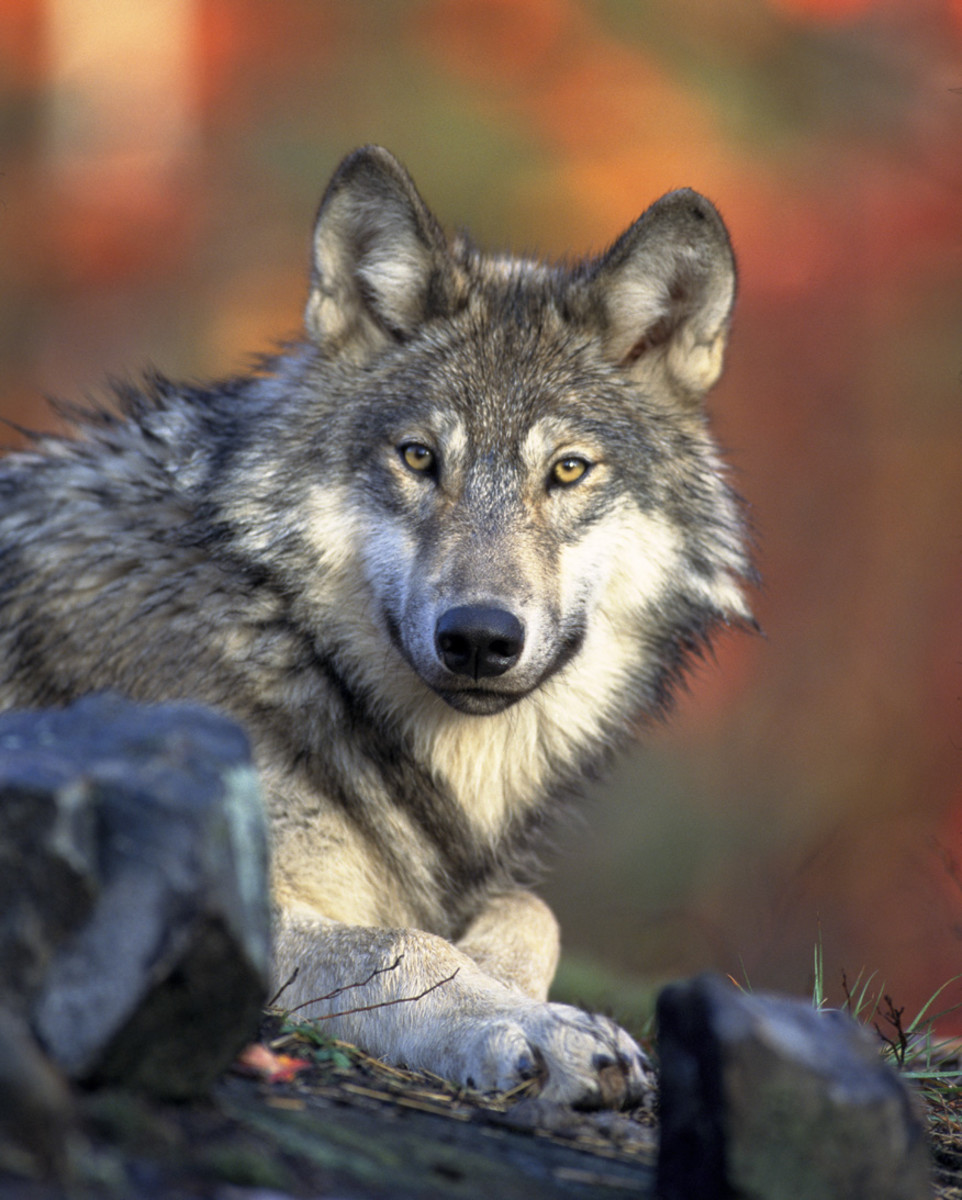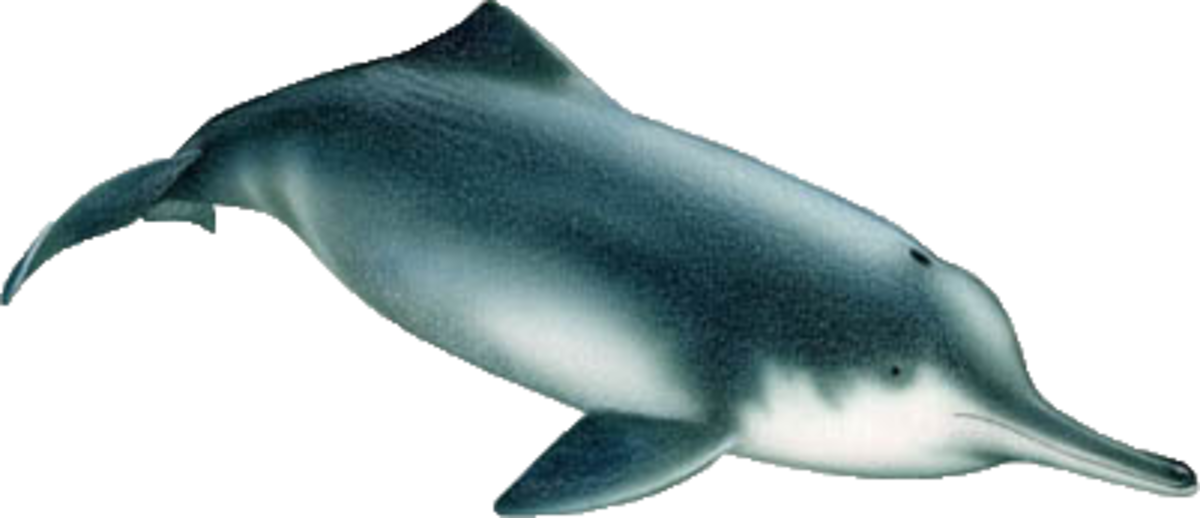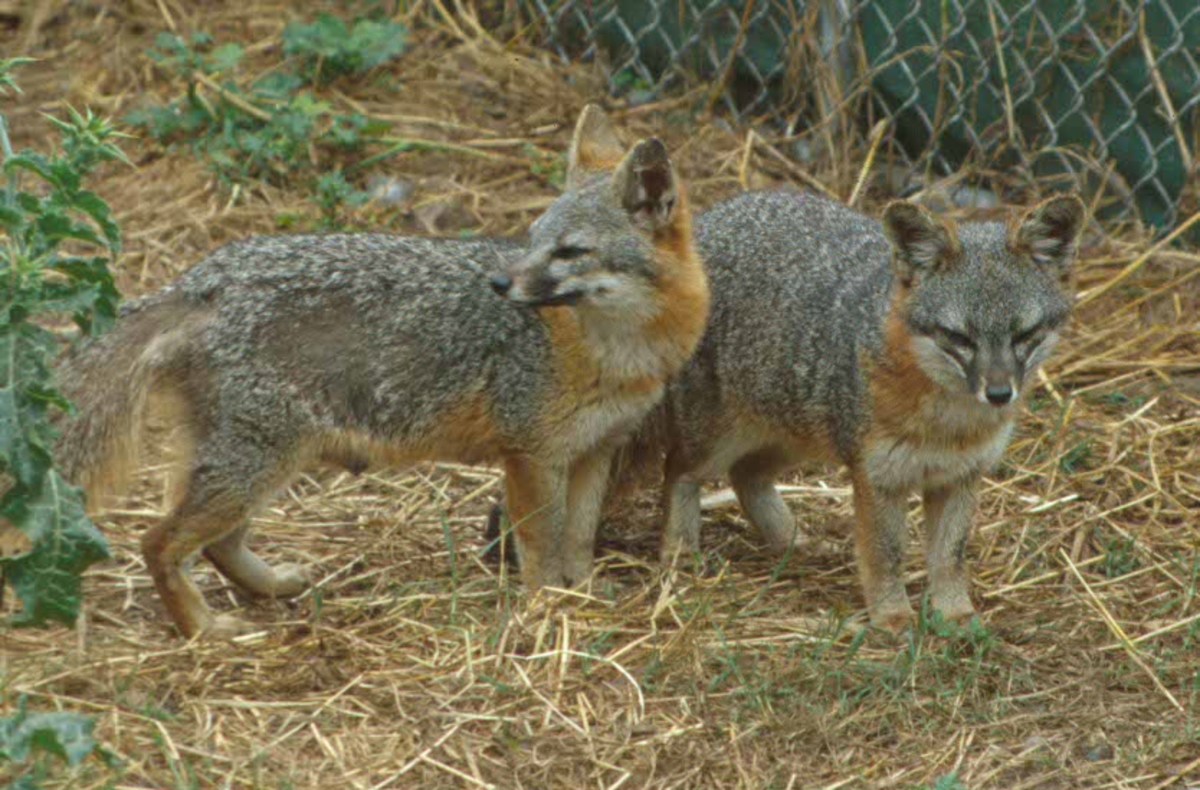- HubPages»
- Education and Science»
- Life Sciences»
- Endangered Species
Will the Currently Endangered Tiger Become Extinct Before the Next Year of the Tiger?
Tigers are an Endangered Species
Tomorrow, February 14, 2010 is the start of the Chinese New Year Festival. This year, February 14th is the first day of the Year of the Tiger.
Each year in the Chinese calendar is named after one of twelve animals in the Chinese Zodiac and the names rotate on a twelve year basis. The next Year of the Tiger will not occur until 2022.
However, there is some concern that this Year of the Tiger (2010) may be the last one in which wild tigers still roam the Earth.
The number of tigers living in the wild have been declining steadily and wild tigers are now considered by the United Nations and most of its member nations to be an endangered species.
Tigers at Tucson's Reid Park Zoo
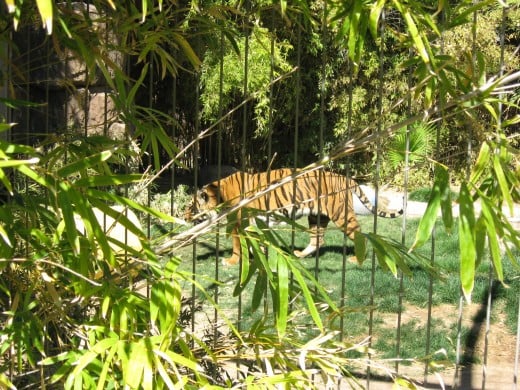
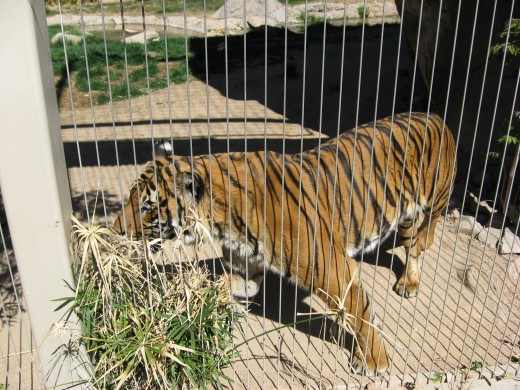
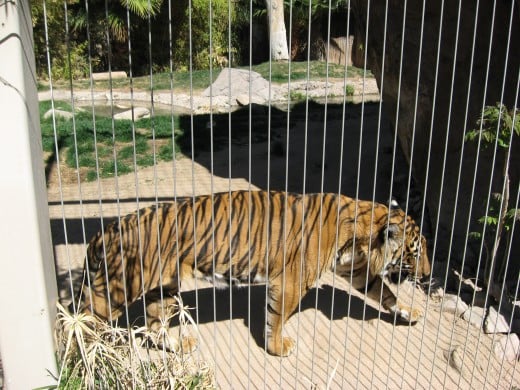
Only Five of the Eight Subspecies of Tiger are Left
According to the website Tigers in Crisis in the early 1900s there were eight subspecies of tiger - Bali, Bengal, Caspian, IndoChinese, Javan, Siberian, South China, and Sumatran. The total estimated population of all wild tigers in that era was estimated to be in excess of 100,000.
According to the same website, the Bali Tiger, the smallest of the eight subspecies and found only on the Indonesian island of Bali became extinct in the 1930s.
The Javan Tiger's habitat was limited to the Indonesian island of Java and is thought to have become extinct in the 1980s although according to WikiPedia there have been some unverified sightings since the 1980s and it is possible that a few Javan Tigers may still survive in West Java.
The Caspian Tiger, which once ranged from Mongolia to Iran, is thought to have become extinct sometime between the late 1950s (WikiPedia) and the 1970s (Tigers in Crisis).
However, WikiPedia claims that not only do some think that there may still be a few Caspian Tigers left, but that the subspecies itself may be a very recent break off from the Siberian Tiger from which it differs by only one letter of genetic code.
With the exception of the Sumatran Tiger which is found only on the Indonesian island of Sumatra and whose numbers in the wild have dwindled to a little over 400, the rest of the wild tigers are found on the Asian mainland. Almost all of the tigers in the wild now live on widely separated animal reserves.
Hub 3 for 30 Hubs in 30 Days Challenge

Its Humans vs Tigers
Since the beginning of time various animal species have become extinct. In fact, according to paleontologists, over 90% of the animals and plants that once lived on the Earth have become extinct and a majority of these, such as the dinosaurs, were extinct long before humans inhabited the earth.
Changes in climate, in geology and the appearance of a new species among other things have resulted in the extinction of various species. In the case of tigers, humans appear to share much of the responsibility for that species' dwindling numbers.
Chinese Demand for Tiger Parts Supports Illegal Trade in Tiger Parts
The hunting and killing of tigers for their body parts is partly responsible for the disappearance of tigers. Although the hunting of tigers is illegal everywhere and trade in tiger parts has been illegal internationally since 1987 and domestically within China since 1993 both illegal hunting and the illegal trade in tiger parts continues to flourish.
For historical and cultural reasons, the biggest market for the illegal trade in tiger parts is China and Chinese communities overseas.
Other human threats to tigers include:
- Shrinking habitat as deforestation resulting from lumbering and conversion of tiger habitat to agricultural production.
- Fragmentation of existing habitat by dams and roads.
- Other human encroachment on tiger habitat.
- In addition to reducing the areas available to tigers to live, human activity also often results in a reduction of other animals which tigers rely on for food.
- Finally, in addition to illegal hunting of tigers for their body parts, farmers moving into areas traditionally occupied by tigers often kill tigers in order to keep the tigers from eating the farm animals belonging to the farmers.
Along with killing tigers themselves, these farmers frequently turn a blind eye to illegal hunting by poachers, choosing to consider those engaged in the illegal tiger parts trade as allies in the elimination of a predator rather than criminals breaking the law.
Mounted Bison Head
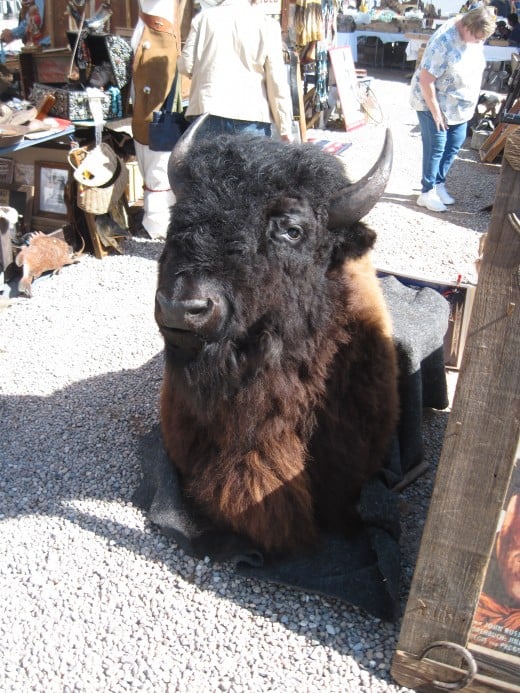
Farm Animals and Household Pets are not Endangered
While some humans have caused some species of animals to become extinct, they have helped others to thrive and prosper. Here I am not talking about scientists, conservationists and others seeking to protect and preserve endangered species like tigers.
No, I am talking about farmers and urban dwellers who work and fight to expand and protect animals of economic value to humans. Animals like cows, pigs, horses, sheep, goats, dogs and cats.
These animals are property and, as such, their owners are willing to fight to protect them.
In the old west a man could go out and shoot all the buffalo (which were on the verge of extinction at one time) he wanted but if he got caught trying to steal a rancher's cattle he was hung.
And while the rancher would help the local sheriff catch the cattle rustler and bring him to justice, he would also be happy to have someone shoot the buffalo as they were competing with his cattle for the grasslands.
The point here is that people protect their property and economic theory states that by converting endangered species into property people will have an incentive to preserve these endangered species.
Tigers as Farm Animals
According to an article in the February 13-14, 2010 edition of the Weekend edition of the Wall Street Journal entitled China's Tiger Farms Spark a Standoff: Economists Propose Legalizing Sales of Some Animal Parts, as Poachers and Rapidly Shrinking Habitat Thin Ranks, reporter Shai Oster reports that while the number of wild tigers in China is numbered in the dozens and the wild population world wide numbers about 3,500, the number of tigers raised and bred in captivity on tiger farms in China numbers 6,000.
A separate World Wildlife Federation report on its web page states that there 5,000 or more tigers in captivity in the U.S. many of which are privately owned as pets as well as those in zoos and wildlife parks such as Busch Gardens in Florida.
The Wall Street Journal article states that the tiger farms in China used to help meet demand for tiger parts in China by legally breeding tigers and selling their parts on the legal market.
Given that the slaughter and sale of parts from a single farm bred tiger could bring as much as $70,000 this was a very good business until 1993 when China bowed to international pressure and halted all sales of all tiger parts both legally bred tigers from farms and wild tigers illegally shot by poachers.
An Arguement for Tiger Farming
In a 2009 working paper entitled Can Domestication of Wildlife Lead to Conservation? The Economics of Tiger Farming in China, University of Victoria, British Columbia economists Brant Abbot and G. Cornelis van Kooten argue that economic theory and history show that by allowing the Chinese tiger farms legally sell tiger parts, they could make illegal poaching of wild tigers uneconomical.
While conservation groups continue to fight to have governments continue to outlaw all sales of tiger parts, Abbot and van Kooten argue that this will not save the wild tigers because Chinese consumers continue to want the tiger parts and the laws are not reducing their demand for these products.
The authors cite a so called stigma effect that according one of their footnotes was put forth in a 2004 article by Carolyn Fischer of Resources for the Future.
As described by Abbot and van Kooten the stigma effect supposedly results in law abiding consumers feeling stigmatized when they disobey laws outlawing the sale of products they have traditionally purchased.
Abbott and van Kooten, citing the experience of laws outlawing the sale of African elephant products, state that the stigma effect has yet to be proven empirically.
The U.S. experience with Prohibition (the 1919 Constitutional Amendment that outlawed the manufacture, sale and consumption of alcohol in the U.S. - which was repealed in 1933) would be another example, of not only the lack of a stigma effect but the opposite, where consuming the illegal product became fashionable and sales increased.
The authors also cite other objections which claim that the sale of farm bred tiger products would make the sale of illegally obtained product from wild tigers easier as there would be no way to differentiate between legal and illegal product once it reached the open market.
However, the authors point out that in the U.S. and Europe cattle are registered at birth and this registration enables authorities to ensure that illegally obtained cattle products are not laundered and sold on the open market.
Interestingly the World Wildlife Federation website cited above states that the lack of tiger registration in the U.S. results in no one knowing who owns these tigers or what becomes of their parts when they die or are slaughtered by their owners. Some of these U.S. tigers, according to the WWF could be entering the illegal market in tiger parts.
Sea Otters at Tucson's Reid Park Zoo

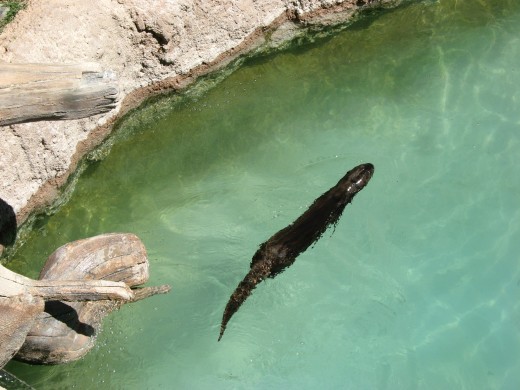
The Case of Beavers and Sea Otters
According to Abbott and van Kooten, an additional flaw with the present method of simply outlawing the trade in tiger parts is weakened by the fact that no one has an incentive to stop the trade and that government officials charged with enforcing the laws banning the trade can often be brought off with bribes.
A market solution is a better way to attempt to halt the illegal hunting of tigers which is helping to deplete the wild population.
They back this up by citing the experience of the Hudson Bay Company's monopoly on the colonial trade in beaver furs in the area east of the North American Continental Divide and contrasting it with the free for all trade in sea otter furs in North America west of the Continental Divide.
To protect its monopoly profits, the Hudson Bay Company both regulated its own hunting and enforced bans on outside hunters in order to manage the beaver population and keep it at a sustainable level. This worked for 200 years until the demand for beaver pelts declined and made further protection of the beaver unnecessary.
In the case of the sea otters no one had an incentive to restrict their hunting as no one owned the sea otter. In fact, everyone had an incentive to hunt as much as possible in order to maximize their profits before the sea otter population was depleted. The result was that the beaver survived and did not become an endangered species while the sea otter almost became extinct.
Encroachment on Wild Tiger Habitat
Of course illegal hunting of tigers is just part of the problem. Human encroachment on their habitat is also a major threat to wild tigers' existence.
However, the authors note in passing that the agricultural population in China stopped growing in 1990 and that deforestation also stopped increasing about the same time.
But, other than citing the rising cost of agricultural land as a possible cause, they pass over this and concentrate on the poaching problem.
However, the 1990s marked the start of political and economic change in China.
Liberalization and a movement toward the free market resulted in economic growth and a movement of people away from rural agriculture and toward urban manufacturing.
As I noted in my previous Hub, Honoring Dogs During Chinese New Year Festival, in the days leading up to the start of the Chinese New Year Festival the roads and railroads are crowded with young people traveling from their homes in the cities to their parents and other relatives' homes in the country.
Along with the migration from rural to urban areas, economic progress also results in rising incomes and increased leisure time both of which provide people with the opportunity to appreciate and enjoy nature.
Economic Growth is the Solution for Wild Tiger Survival
While wild tigers may be a threat to the economic existence of peasants struggling to scratch out a living on small pieces of land bordering a forest, wild tigers can just as easily be an attraction when the economy of an area bordering the forest changes from substance farming to tourism.
And, while Chinese want tiger bones and other body parts for traditional medicines and other uses, they also hold the tiger itself in high esteem and growing affluence will afford increasing numbers of Chinese to enjoy the experience of visiting this magnificent creature in the wild.
Links to Articles on Tigers and Conservation
- Economic Progress Benefits both Humans and Nature
I often have to remind students in my economics classes that things like statistics, financial statements, supply and demand diagrams, etc. are similar to photographs in that they provide a picture of... - No Free Lunch: Conservation run Amok
Market vs Government regulation methods for conserving wildlife. - Javan Tiger - Wikipedia, the free encyclopedia
Article on the Javan tiger of Indonesia - Caspian Tiger - Wikipedia, the free encyclopedia
Article on Caspian Tigers - WWF - Press Release - Year of the Tiger Begins with Big Cats in Serious Trouble Around the World, In
As many Asian countries prepare to celebrate Year of the Tiger beginning February 14, World Wildlife Fund (WWF) reports that tigers are in crisis around the world, including here in the United States, where more tigers are kept in captivity than are - The Complex Interaction of Markets For Endangered Species Products
Downloadable! Abstract Economic models of trade in endangered species products often do not incorporate four focal arguments in the policy debate over trade bans: 1) law-abiding consumers may operate in another market, separate from illegal consumers - WPSI - Wildlife Protection Society of India - Tiger Reserves
Information on Tiger Reserves in India - TIGERS IN CRISIS - Information About Earth\'s Endangered Tigers
Tigers In Crisis provides news, information, photos, and video about Earth's endangered tigers. - Can Domestication of Wildlife Lead to Conservation? The Economics of Tiger Farming in China
Downloadable! Tigers are a threatened species that might soon disappear in the wild. Not only are tigers threatened by deteriorating and declining habitat, but poachers continue to kill tigers for traditional medicine, decoration pieces and so on. Al - WWF - Press Release - Year of the Tiger Begins with Big Cats in Serious Trouble Around the World, In
As many Asian countries prepare to celebrate Year of the Tiger beginning February 14, World Wildlife Fund (WWF) reports that tigers are in crisis around the world, including here in the United States, where more tigers are kept in captivity than are

Endangered Tigers and Sea Otters


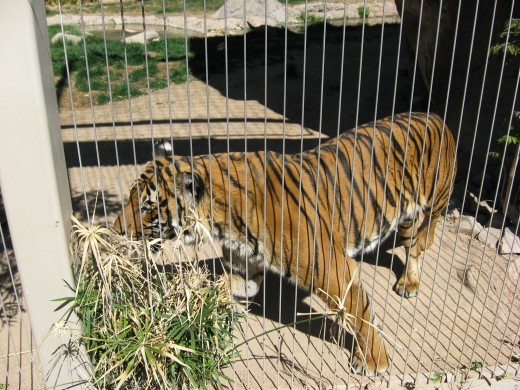
My Editorial Assistant




